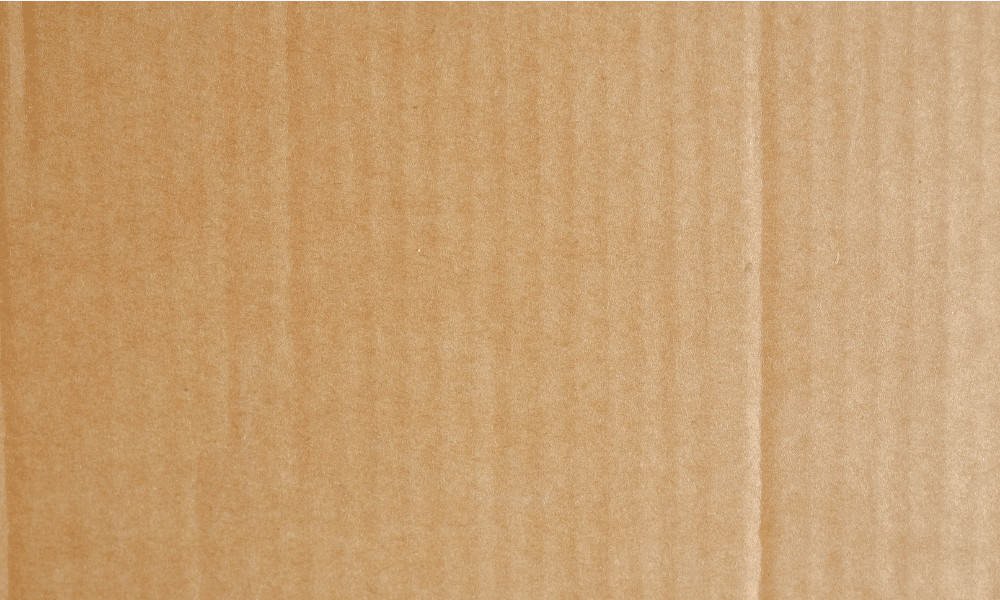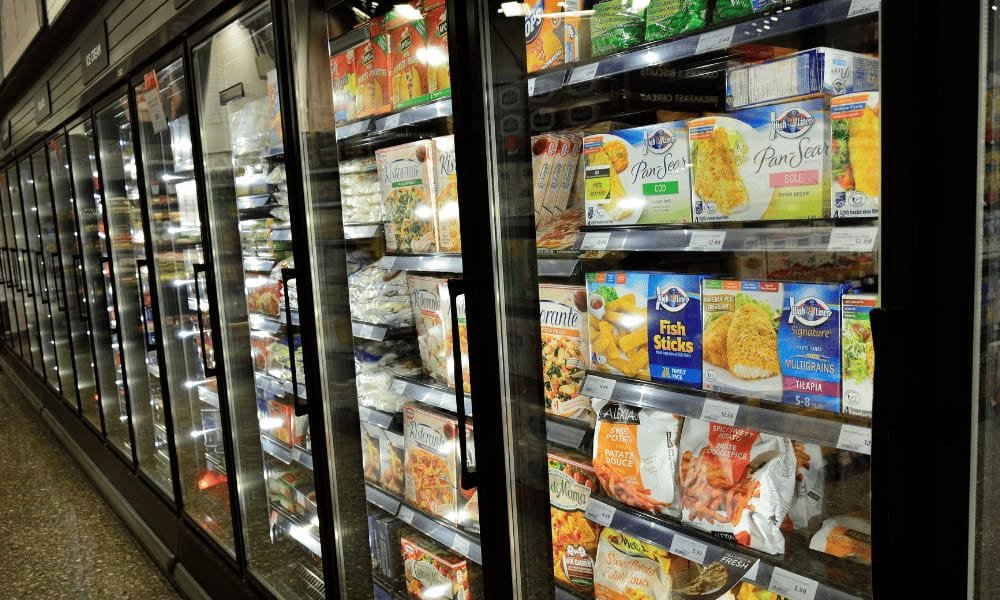Many of us are trying to reduce our use of plastics in a bid to do more for the environment. In the search for alternatives, you may wonder if you can freeze food in cardboard boxes. Here we will look at why this isn’t a great idea and explore alternatives.

Can You Freeze Food In Cardboard Boxes?
Cardboard boxes aren’t a great choice for freezer storage because they are not airtight and will allow moisture to escape from food, causing freezer burn. However, they can be used to organise items inside a chest freezer.
Is It Safe to Freeze Food in Cardboard Boxes?
Some people are concerned that storing food in plastic containers could be dangerous because of worries that potentially harmful chemicals could leach out of the plastic into the food, particularly when the plastic is heated.
Using cardboard packaging would eliminate this concern.
However, cardboard boxes are not airtight, which allows moisture to escape, leading to freezer burn. While freezer burn is not dangerous, it does affect the quality of food, impacting colour, flavour and texture.
Why Do Food Manufacturers Sell Frozen Food in Cardboard Boxes?
In the supermarket, you will see a whole range of frozen foods packaged in cardboard boxes, including pizza, pies, coated chicken fillets, burgers and fish fingers, which might make you think it must be a good option for frozen food storage.

There are many reasons manufacturers choose to package frozen foods in cardboard boxes.
Uniformity
Firstly, cardboard boxes are uniform in shape and size, making them easy to pack into boxes or onto crates for storage, transportation and distribution.
Affordable
Cardboard is also affordable, durable and lightweight. Cardboard is a great choice for food companies because it can be printed with enticing images of the product, as well as brand labelling, cooking instructions and nutritional information.
Environmentally-Friendly
Cardboard is also a good choice for companies who want to show their commitment to the environment, as it comes from a renewable source and is one of the most widely accepted packaging materials worldwide.
Many frozen foods come in cardboard boxes, and where this is the case, don’t feel like you have to repackage them. Most cardboard used to package frozen foods has a plastic or wax coating, which helps make it more suitable for storage.
Some ready meals are sold in cardboard boxes that have a special coating, allowing them to be cooked in the microwave. This is a great choice for convenience and simplicity.
What are the Drawbacks of Freezing Food in Cardboard Boxes?
As noted above, the main concern with cardboard boxes is that they are not airtight. This allows moisture to escape from food and is likely to affect the colour, texture and flavour.
Once opened, it is hard to reseal cardboard boxes, as adhesive tape doesn’t work at low temperatures.
This means if an open box gets knocked or put back in upside down, items can fall out, creating a mess or potentially leaving those items exposed without packaging.
What are the Benefits of Freezing Food in Cardboard Boxes?
Cardboard boxes usually have uniform straight edges, making them easy to pack together and organise in your freezer.
Cardboard is also easy to recycle. These days most people have their recyclable cardboard collected by the council as part of their scheduled refuse collection.
Which Foods Freeze Well in Cardboard Boxes?
Unless the food in question came in a cardboard box, our advice would be to avoid using cardboard boxes to store items in the freezer.
The only exception would be that cardboard boxes can be used to organise items in a chest freezer.
Chest freezers often don’t have a built-in organisation system, and can become cluttered and disorganised. While there are many possible storage solutions on the market, if you are looking for a cheap or free alternative, cardboard boxes can be a good choice.
What Can You Use Instead of Cardboard Boxes?
The obvious choice for storing food in the freezer is plastic boxes. They come in a range of shapes and sizes and are freely available in supermarkets and high street shops.
Alternatively, you could reuse ice cream tubs or takeaway cartons for a free alternative.
Plastic boxes are airtight, so don’t allow moisture to escape from your food, avoiding the dreaded freezer burn. They are often transparent so you can see what’s inside, and they are easy to label. They are reusable and are often recyclable once they reach the end of their useable life.
However, many plastics contain chemicals such as BPA, BPS, PVC and phthalates, and there have been concerns that these might leach into food that is stored or cooked in plastic containers.
These chemicals have been associated with cancer, immune disorders, infertility and other health issues.
If you are worried about this or are simply keen to reduce your use of plastics, there are plenty of alternatives available.
You may be surprised to learn that glass is a good alternative, as long as you choose tempered or freezer-safe glass and make sure you allow plenty of room for any liquid component to expand as it freezes. You can buy glass storage containers, or you could reuse jars from jam or pasta sauce.
Another great alternative is silicone. Silicone is now used to make storage containers that look and function just like their plastic counterparts but without the associated potential safety risk.


